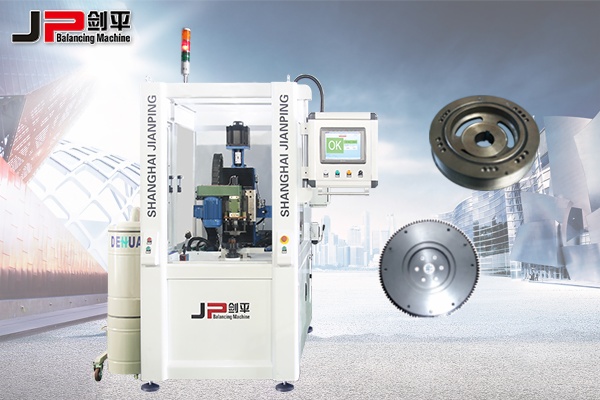Balancing machine is used to determine the rotor imbalance of the instrument and the result of the measurement of the rotor unbalance to correct the vibration generated when the rotor rotation or acting on the bearing to reduce the vibration within the allowable range to achieve the reduction of vibration, Performance and improve product quality. When any rotor rotates around its axis, the centrifugal force is generated due to uneven distribution of the mass distribution relative to the axis. This unbalanced centrifugal force acts on the rotor bearing, will cause vibration, noise and accelerate bearing wear, so that seriously affect the product performance and life. Rotary parts such as motor rotor, machine tool spindle, internal combustion engine crankshaft, steam turbine rotor, and gyro rotor and watch wheel and so on are all need to be balanced to run normally.
Its history of growth!
Balanced machine development has been more than 100 years of history. In 1866, the German company invented the generator. Four years later, the Canadian Henry Martinson applied for a patent for the balance technology, opened the prelude to the balance correction industry. In 1907, Dr. Franz Lawaczek provided improved balance technology to Mr. Carl Schenck, who produced the first double-sided balancing machine in 1915. Until the end of the last century 40's, all the balance process is in the use of pure mechanical balance equipment carried out. The equilibrium speed of the rotor usually takes the resonant speed of the vibration system to maximize the amplitude. In this way to measure the rotor balance, measurement error is large, not safe.
With the development of electronic technology and the popularity of rigid rotor balance theory, most of the balance equipment in the 1950s have adopted electronic measurement technology. The balancing machine of the plane separation circuit effectively eliminates the interaction between the left and right sides of the balance workpiece. Electric measurement system from scratch has gone through the flash, watt meter, digital, microcomputer and other stages, the last appeared automatic balancing machine.
Static balance machine
With the continuous development of production, the need to balance the parts more and more, the greater the volume. In order to improve the labor productivity and improve the working conditions, the industrial countries as early as the twentieth century, the 1950s on the balance of automation technology research, and have created a semi-automatic balancing machine and dynamic balance line. China in the late fifties due to the development needs of production, but also began to gradually study this. The development of the crankshaft automatic balancing machine was carried out, and the test prototype was made, which took the first step in the research of dynamic balancing technology in China. In the late sixties, began to develop China's first CNC six-cylinder crankshaft dynamic balance automatic line, and in 1990 trial production success. Equilibrium testing machine microprocessor control technology is one of the world's dynamic balance technology development direction.
Years of commitment to balance machine technology research and innovation, in the vertical drilling of the overall balance of the advantages of the body, JP Balancing Machines has many customers praise. The machine is widely used in automobile clutch pressure plate, flywheel, pulley, pump impeller balance correction. Using JPBM the latest technology, the workpiece from the balance measurement, angle positioning, drilling to heavy and re-test, all the implementation of automation; with simple operation, easy to use, high precision; for small and medium-volume production.
What are the problems with vertical balancing machines?
Shanghai JPBM provides a standard range of vertical balancing machines that can be in a plane (static) or two planes (dynamic). The vertical balancer can balance the rotor with the heaviest weight range of 200 kg. As a professional manufacturer, Shanghai JP BM also manufactures special vertical balancing machines that can fit all types of rotors. Vertical balancing machine characteristics, balancing machine using JPBM lead electrical measurement system, dynamic and static balance, support up to 10 kinds, plus weight, positive and negative can be customized, the use of multiple calibration coefficient combination, automatic Adjust the system sensitivity, the shift without jump, hardware and software double filter, high-speed data compression, measurement more stable, more accurate, faster, calibration interface specialization easier maintenance, calibration section up to 10, the calibration factor Real-time verification, and with a system of linear graphs, measurement shows the amount of balance and angle units can be customized, display accuracy can also be customized to achieve real-time conversion unit to meet different customer needs.

1. Artificial loading and unloading.
2.15 inch touch screen.
3. Balanced machine measurement software advanced.
4. Automatic measurement, automatic drilling correction, automatic re-test.
5. The workpiece can be more than twice to re-correction.
6. Steel machine-type structure design, high service life.

.png)
.png)

.png)
